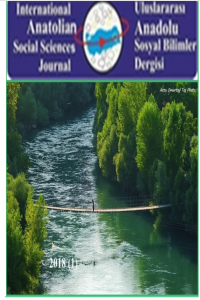TRAVMA EDEBİYATI İLE İLGİLİ BİR KİTAP DEĞERLENDİRMESİ: “38, TRAVMA, İYİLEŞME VE ANNEMİN YÜZYILI”
Akademisyen yazar olan Yusuf Arslan’ın kaleme almış olduğu “38, Travma, İyileşme ve Annemin Yüzyılı” isimli anı çalışmasını, travma edebiyatının biyografik bir örneği olarak ele almak mümkündür. Kitapta, 1938 yılında meydana gelen dehşetengiz travmanın canlı tanığı ve mağduru olan Sabriye’nin yaşadıkları anlatılır. Bu tanıklık aynı zamanda 1938 yılı Dersim halkının trajedisidir de. Eseri, benzerlerinden farklı kılan şey, sadece anılara değil bizatihi travma ve iyileşme süreçlerine konsantre olması ve alan açmasıdır. Bu anı çalışmasının soyağaçları paramparça edilen ya da dehşetengiz travmaları olan okurlar üzerinde sarsıcı etkiler bırakacağı düşünülmektedir.
BOOK REVIEW ON TRAUMA LITERATURE: “38 TRAUMA HEALING AND MY MOTHER'S CENTURY”
38, Trauma, Healing, and My Mother’s Century by Yusuf Arslan, an academician, and writer, is a biographical example of trauma literature. This book recounts the experiences of Sabriye, who witnessed and fell victim to the horrific trauma that occurred in 1938. This testimony is also the tragedy of the Dersim people in 1938. What sets this work apart from others is its concentration not only on the memoirs but also on the processes of trauma and healing, opening up new perspectives. In his work, Arslan narrates the events that his mother Sabriye, who was only 6 years old at the time, recounted to him years later, about the tragedy. Sabriye experiences trauma as the sole surviving child of her family in the village of Dersim. She lies wounded under the bodies of her deceased family members for a night. The following day, her aunt finds Sabriye, whose body had been pierced by six gunshot wounds, causing bleeding, internal injuries, and loss of consciousness. Sabriye’s aunt, Fatma, has a new task: it is to take care of Sabriye, the sole survivor, and provide her with medical treatment in order to keep the last member of her brother’s family, collectively killed in the massacre, alive and to continue the family tree. With the help of her aunt, Sabriye, who receives basic healthcare and manages to sustain her life, finds her own methods to overcome the trauma she experienced. Surprisingly, Sabriye, who received no medical assistance or therapy, becomes a normal and healthy individual. Sabriye gets married, establishes a home, and becomes a great parent to her nine children. This book emphasizes that Sabriye, who is 94 years old, never underwent any surgeries and has a very strong memory. Overcoming trauma on her own by methods she finds independently, she demonstrates determination, patience, resilience, and strength. It is believed that this memoir will have a profound impact on readers whose family trees have been shattered or who have experienced devastating traumas themselves.
